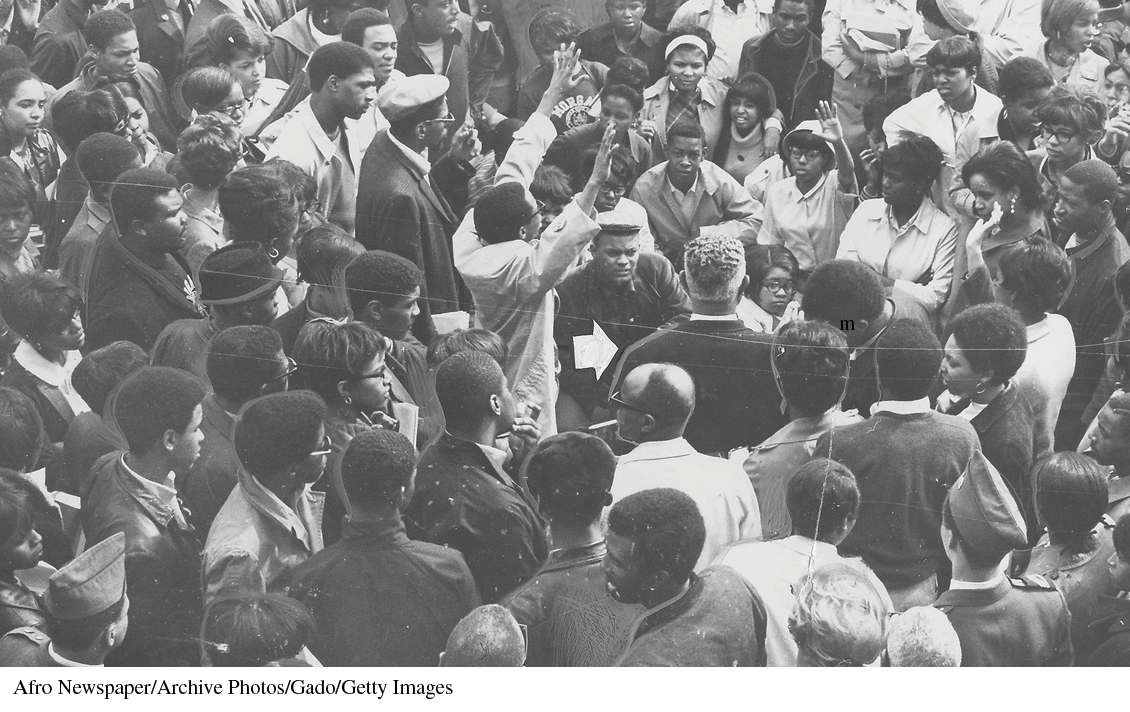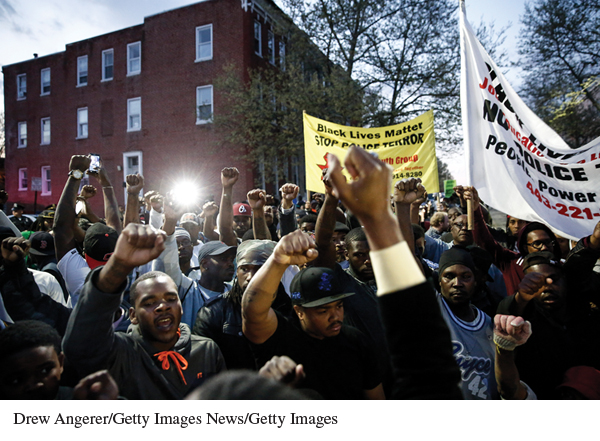Instructor's Notes
To download handouts of the Learning by Doing activities and checklists that appear in this unit, and to access lecture slides, teaching tips, and Instructor’s Manual materials, go to the “Instructor Resources” folder at the end of this unit.
Introduction to Chapter 7
7
Comparing and Contrasting


Responding to an Image
Both of these pictures capture protests in Baltimore, Maryland. The top photograph shows university students demonstrating two days after the April 4, 1968, assassination of civil rights leader Martin Luther King Jr. The bottom photograph, taken in April 2015, shows protesters participating in a vigil for Freddie Gray, an African American man who suffered a fatal injury after being taken into police custody. Examine the two photographs carefully, noting similarities and differences. What similar or different qualities are evident in the configuration of the crowds and their leadership, or in the energy or focus of the protesters? What do these and other similarities or differences say about the years the photos were taken or the causes for which the protesters have gathered?
Which city—Dallas or Atlanta—has more advantages or drawbacks for a young single person thinking of settling down to a career? Which of two ads for the same toy appeals more effectively to parents who want to get durability as well as educational value for their money? As singers and songwriters, how are Beyoncé Knowles and Taylor Swift similar and dissimilar? Such questions invite answers that set two subjects side by side.
When you compare, you point out similarities; when you contrast, you discuss differences. When you write about two complicated subjects, usually you need to do both. Considering Mozart and Bach, you might find that each has traits the other has—or lacks. Instead of concluding that one is great and the other inferior, you might conclude that they’re two distinct composers, each with an individual style. On the other hand, if your main purpose is to judge between two subjects (such as moving either to Dallas or to Atlanta), you would look especially for positive and negative features, weigh the attractions and faults of each city, and then stick your neck out and make your choice.
Why Comparing and Contrasting Matter
In a College Course
You compare and contrast to “evaluate” the relative merits of Norman Rockwell and N. C. Wyeth in an art history course or the relative accuracy of two Civil War Web sites for a history course.
You compare and contrast to “describe” a little-known subject, such as medieval funeral customs, by setting it next to a similar yet familiar subject, such as modern funeral traditions.
In the Workplace
You compare and contrast your company’s products or services with those of competitors.
In Your Community
You compare and contrast your options in choosing a financial aid package, cell phone contract, childcare provider, bike helmet, or new mayor.
 What are some instances when you compare or contrast products, services, opportunities, options, solutions, or other things? When might you use comparison, contrast, or both in your writing? What would you expect them to contribute?
What are some instances when you compare or contrast products, services, opportunities, options, solutions, or other things? When might you use comparison, contrast, or both in your writing? What would you expect them to contribute?